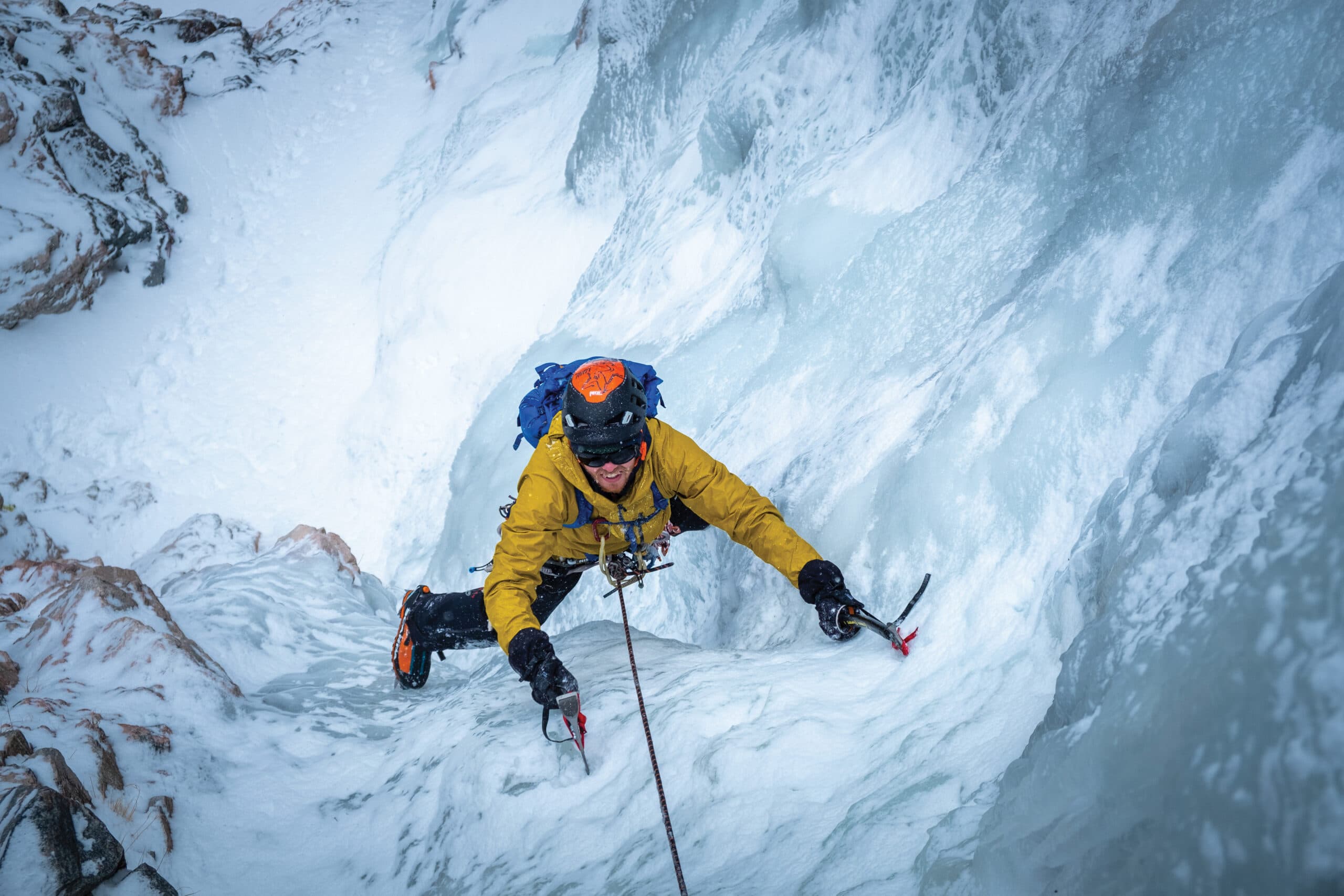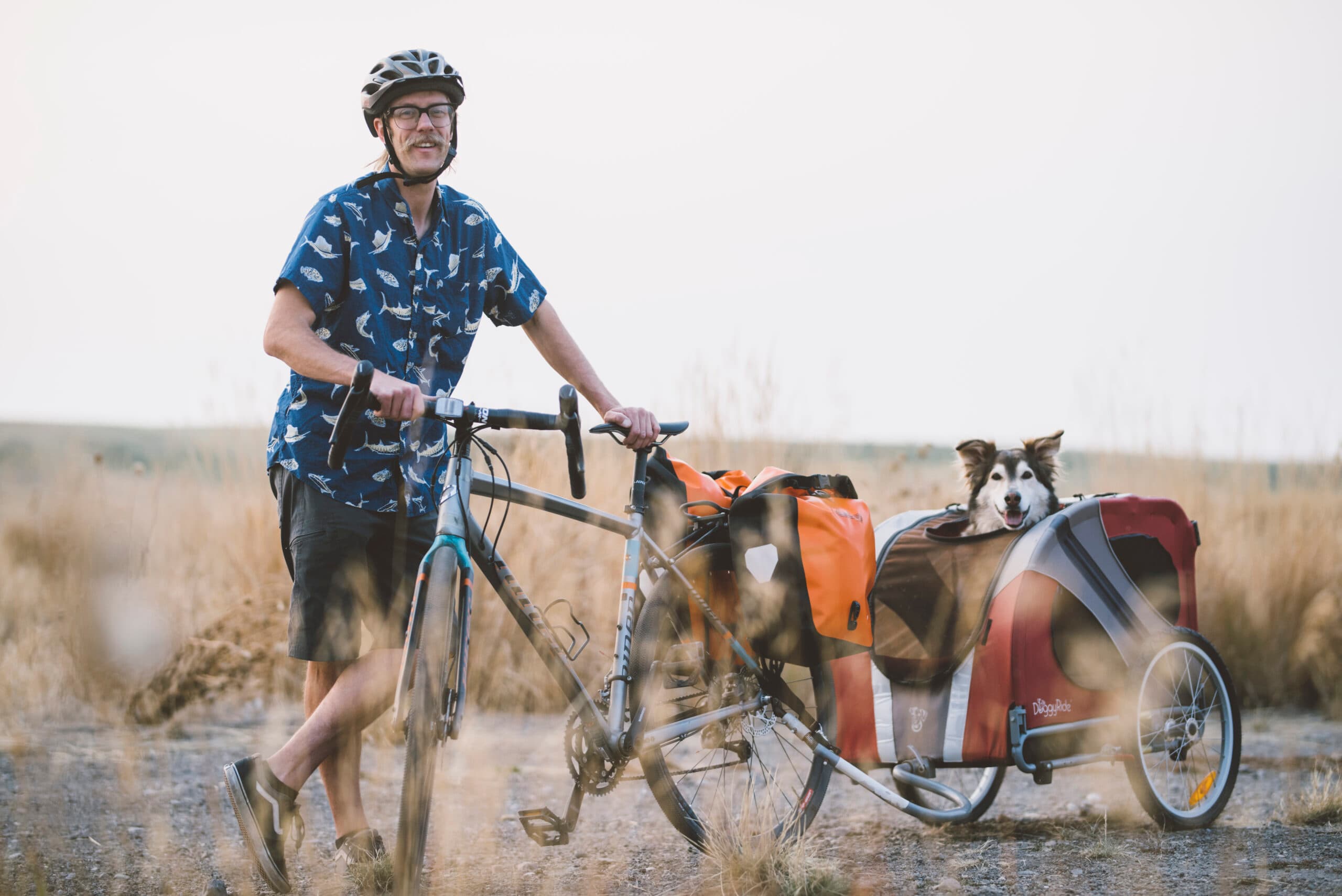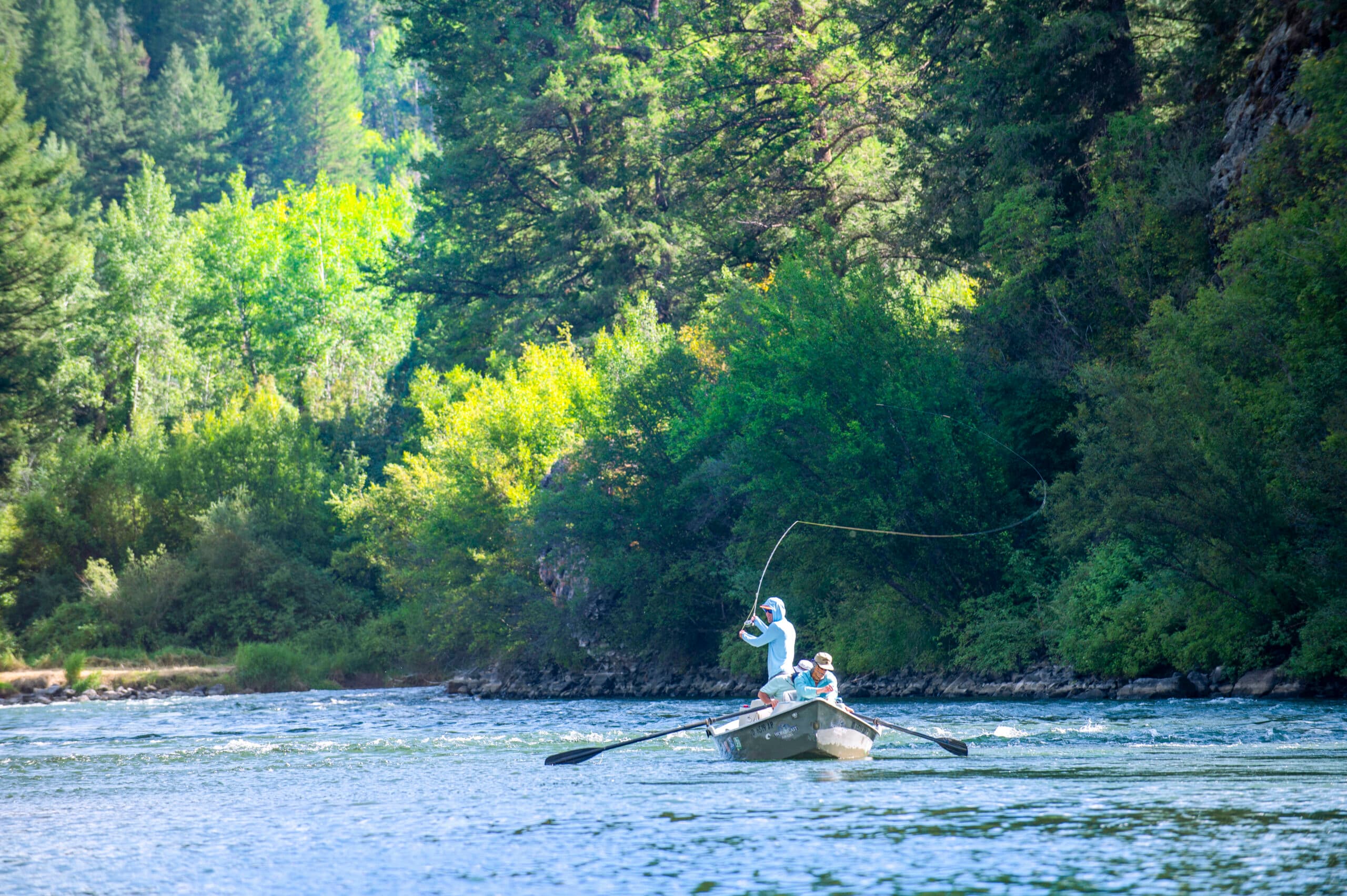Pines in Peril
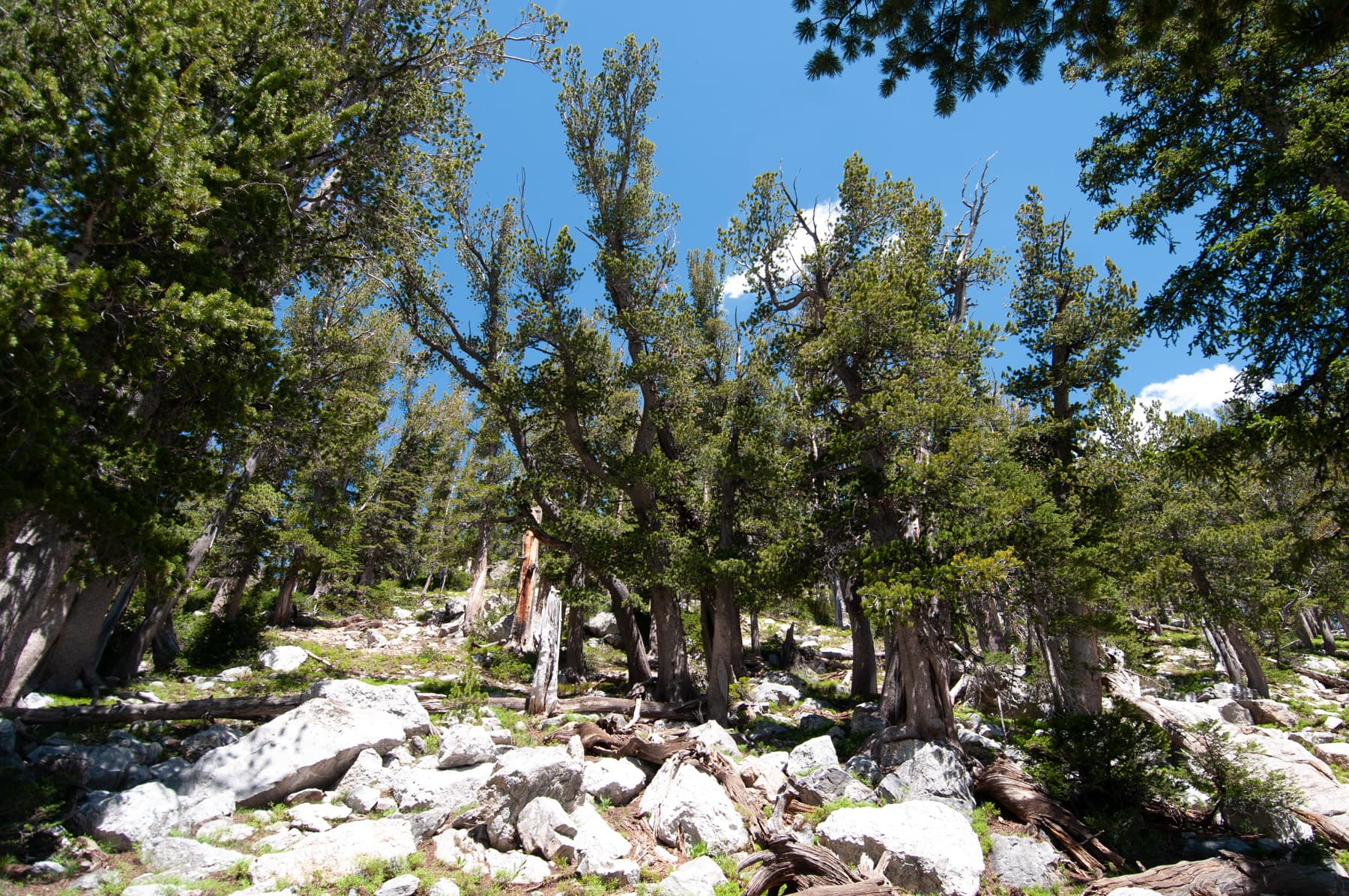
When I was a child, massive inscrutable objects of natural history fascinated me: dinosaurs,tectonic plates, volcanoes.
That wonder extended to the western red cedar, mountain hemlock, and Douglas fir in my Oregon homeland, with woods defined by sun-blocking canopy and muffled footsteps on thick duff.
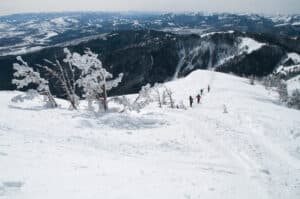
Those moss-draped sentinels are the eco-opposite of the tree that epitomizes the harsh, alpine areas in the Greater Yellowstone Ecosystem (GYE): the windswept, hardy whitebark pine. Growing up to 95 feet tall and once found across alpine and subalpine areas from northern California to southwestern Wyoming and north to British Columbia and Alberta, Pinus albicaulis has receded across its historic range, including a loss of 80 percent of individual pines found in the Greater Yellowstone Ecosystem. Perhaps more than any other tree in our region, whitebark reveal humans’ failure to reckon with our impact on the environment.
“It’s been devastating, the loss of a tree that’s been so important, not only to [researchers], but to Indigenous peoples as well,” longtime whitebark researcher Jesse Logan says. Standing watch long before humans trod this continent, whitebarks welcomed the descendants of those who passed over the Bering Land Bridge, becoming an important food source, their high-calorie seeds toasted or turned into pastes. They can live more than 1,000 years, one single tree able to outlast empires.
I stood beneath the weathered, gnarled trunk of a whitebark snag this summer in the Centennial Range along the Montana-Idaho border. Like many backcountry skiers, I spend lots of time with whitebarks during the winter, but seeing this one devoid of snow gave me time to consider it. Sun-bleached and ashen gray, bright green wolf lichen creeping up its bare branches, it had transformed from organism to habitat. Before giving up the ghost, it had watched tribes from the region convene to trade stone tools, dig camas bulbs in the fertile valleys, and hunt elk in the highlands. This tree had seen Euro-American settlement displace the tribes, bringing sheep, then cattle, then ATVs high into its rarefied realm. Now, in life after death, it nourishes lichen and microorganisms, returning nutrients to the scrabbly soil.
Keystone species like whitebark pine have an outsized impact relative to their populations. Species like bees, sea otters, wolves, and sea stars help define how their ecosystems function. Whitebarks are a no less crucial example to mountainous forests. Grizzly bears and Clark’s nutcrackers have long depended on the seeds to pad themselves for the Mountain West’s long winters. A single Clark’s nutcracker can hoard 90,000 seeds a year, and when one loses track of a cache, it creates a haven for new pines to emerge.
Windblown snow deposits tucked into the shelter of the trees’ trunk melt slowly in the spring, metering the mountains’ life-giving water. Farmers depend on such processes to keep crops alive throughout the dry summer. Fish, too, need that cold alpine water late in the season to maintain low stream temperatures. While the impact of a beaver on a stream is visually apparent, it has been harder for people (at least non-Indigenous ones) to recognize that whitebark is one of the most important components of wilderness, what Aldo Leopold called “the raw material out of which man has hammered the artifact called civilization.”
As to why that is, Jesse says, proximity is key: “The habitat of whitebark, at least until pretty recently, was off the radar screen in these high, remote habitats that not many people got into.”
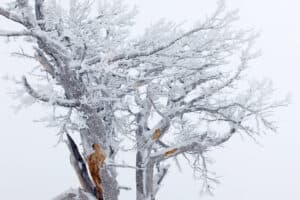
Humans are, of course, to blame for the two biggest factors hastening the species’ decline. Blister rust, a fungus brought over on ships from Asia in the early 1900s, kills trees branch by branch. Other than a yearslong process of cultivating and planting saplings from the 25 percent of whitebarks that show resistance to the fungus, there is no treatment.
Anthropogenic climate change has made cold snaps no longer sufficient to control populations of mountain pine beetles, a native antagonist that kills the trees by burrowing into and eating them from the inside. “There’s this catastrophic disturbance that the beetles cause, and there’s this more low-grade, endless disturbance that the rust causes,” says Nancy Bockino, who has studied and planted the trees for two decades.
French philosopher Jean-Paul Sartre
wrote of anguish “experienced by all those who have borne responsibilities.” As it relates to the whitebark pine’s plight, we all bear responsibility and I feel anguish knowing the trees may retreat to the highest, coldest reaches of their range, like the central Wind Rivers or Montana’s Beartooth Basin. Someday all whitebarks in the Tetons could be like that gray sentry in the Centennials.
I find hope, however, in another of Sartre’s concepts that “existence precedes essence,” meaning we create ourselves through our actions and, by extension, create our world. If whitebarks thrive into the future, it will be because we have recognized our own culpability and taken steps to address it. This work is already happening in forests around the West. Nancy is at the vanguard of a movement that has planted tens of thousands of whitebark seedlings, through her work now under the auspices of the Northern Rockies Conservation Cooperative. Scientists are growing trees resistant to blister rust, a painstakingly slow process but one that
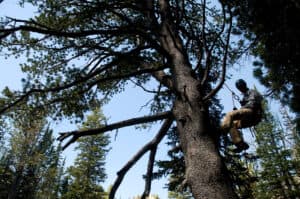
holds promise.
Whitebarks take up to fifty years to deposit their first seeds. That’s a drop in the bucket of a centuries-long lifespan, but an interval that puts the species at risk of being devoured by the whirlwind of modern humanity before it can adapt to threats like blister rust, voracious beetles, and larger forest fires. If Nancy and others around the country, who trek into the alpine to leave thousands of saplings, are successful at stopping the whitebark’s decline, perhaps we can create a world whose essence is not one of destruction, but one of coexistence.

In addition to pine beetles, whitebark pine trees face threats from blister rust, a yellow fungus that can kill a tree’s branches and weaken its overall strength.
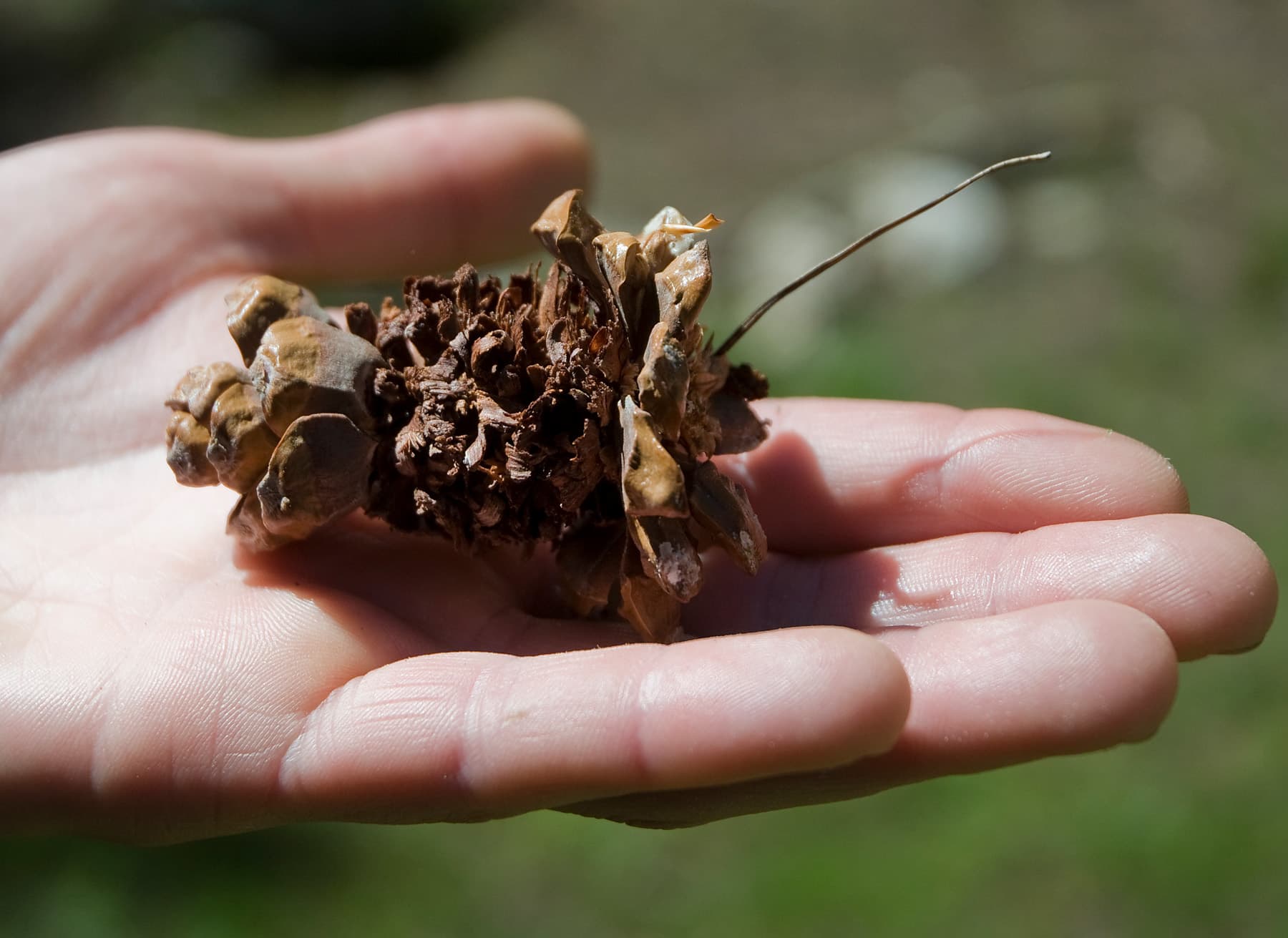
Nancy Bockino holds a whitebark pine cone that has been almost picked clean by birds or squirrels. Bockino hopes the baskets placed over the cone clusters on whitebark pine branches will allow the cones and their seeds to mature, when they will then be picked and stored by the researchers.



